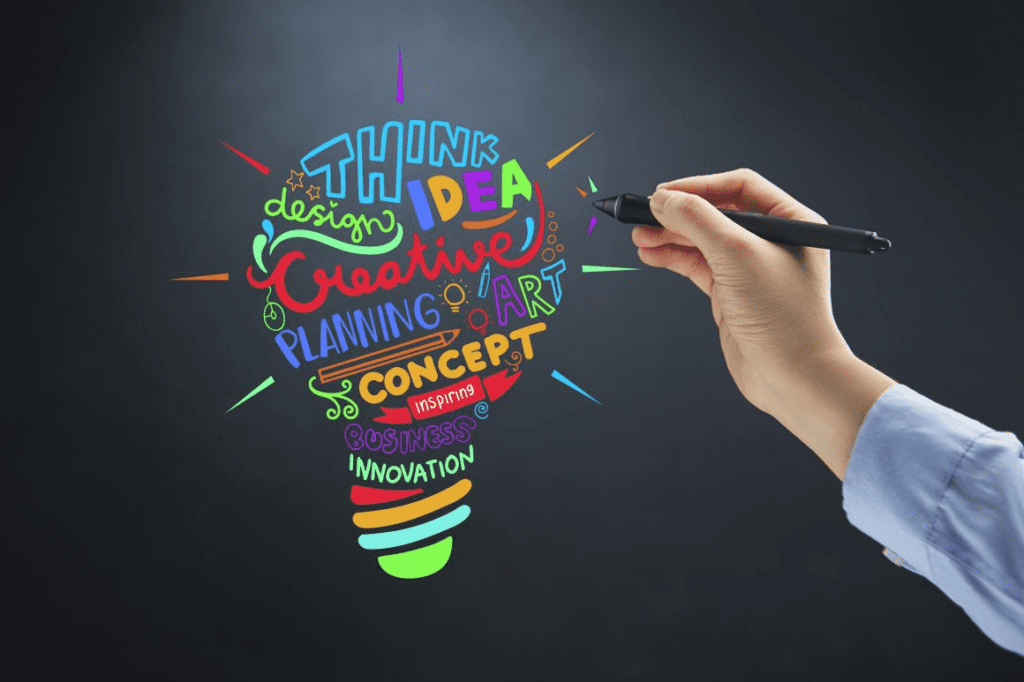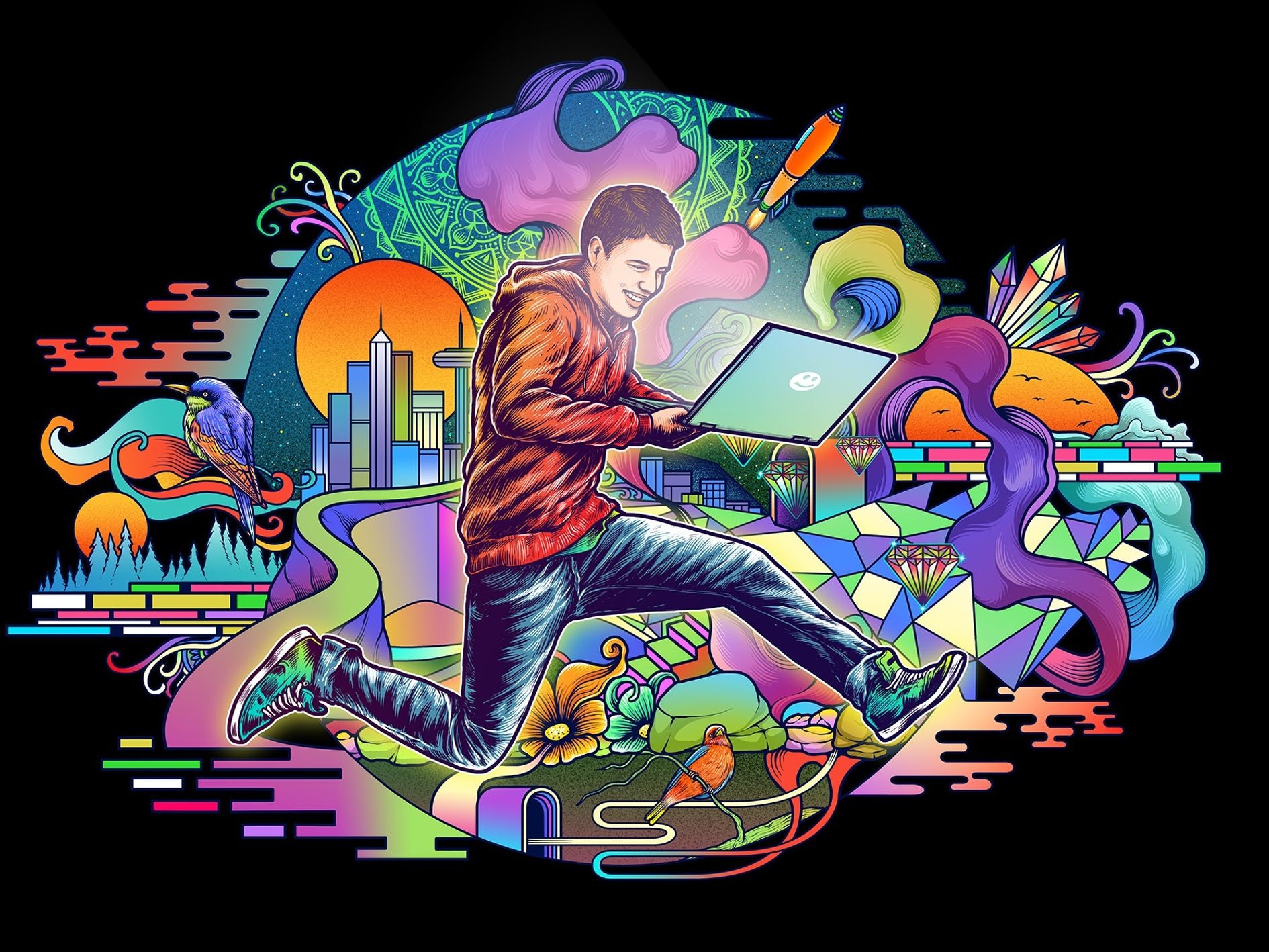Why Graphic Design is My Passion
Graphic design is not just a profession; it’s a passion that drives creativity and innovation. From creating captivating visuals to communicating messages effectively, graphic design plays a pivotal role in various industries. In this article, we delve into what graphic design entails, explore the essence of passion in this field, discuss pursuing graphic design as a career, address common challenges, and emphasize the importance of embracing the passion for graphic design.
Understanding Graphic Design

Understanding Graphic Design involves gaining insight into the principles, concepts, and techniques that form the foundation of visual communication. It encompasses a broad spectrum of disciplines, including typography, illustration, photography, and layout design, all aimed at effectively conveying messages and ideas to a target audience.
At its core, graphic design is about combining elements such as text, images, and symbols in a visually appealing and cohesive manner. This involves careful consideration of factors like color theory, hierarchy, and composition to create designs that are not only aesthetically pleasing but also functional and impactful.
Moreover, understanding graphic design entails grasping the role it plays in various contexts, from advertising and branding to user interface design and editorial layouts. It involves analyzing how design choices influence audience perception and behavior, and how they can be leveraged to achieve specific communication goals.
Ultimately, understanding graphic design is about appreciating its power to communicate, evoke emotions, and shape the way we interact with the world around us. It’s about recognizing the artistry and thoughtfulness behind every design, whether it’s a logo, a poster, or a website interface, and understanding the principles that drive its creation.
What is Graphic Design?
Graphic design involves the art of visual communication using typography, photography, and illustration. It encompasses creating logos, advertisements, websites, and more, with the aim of conveying a message or eliciting a response from the audience.
Importance of Graphic Design
Effective graphic design can make a significant impact on branding, marketing, and overall business success. It helps businesses stand out in a crowded marketplace, enhances brand recognition, and influences consumer perceptions.
Exploring Passion for Graphic Design

Exploring Passion for Graphic Design delves into the intrinsic motivation and enthusiasm that drives individuals to pursue a career or hobby in this creative field. It involves introspection into what ignites the spark of passion for graphic design and how it manifests in one’s work and personal expression.
Passion for graphic design often stems from a deep-seated love for art, creativity, and problem-solving. It’s about finding joy and fulfillment in the process of transforming ideas and concepts into visually compelling and impactful designs. This passion fuels the drive to continuously experiment, innovate, and push the boundaries of design possibilities.
Cultivating a passion for graphic design involves nurturing creativity and honing artistic skills through practice, exploration, and learning. It’s about embracing the challenges and setbacks as opportunities for growth and self-improvement, rather than obstacles to overcome.
Passionate graphic designers are often characterized by their unwavering dedication to their craft, their eagerness to explore new techniques and trends, and their relentless pursuit of excellence. They find inspiration in the world around them, drawing from diverse sources such as nature, architecture, culture, and technology to fuel their creative process.
Moreover, passion for graphic design extends beyond mere technical proficiency; it encompasses a deep appreciation for the impact and significance of design in shaping human experiences and perceptions. It’s about understanding the role of design in conveying messages, eliciting emotions, and fostering connections between individuals and brands.
In essence, exploring passion for graphic design is a journey of self-discovery and self-expression. It’s about tapping into one’s inner creativity, embracing the challenges and rewards of the creative process, and ultimately finding fulfillment and satisfaction in the ability to bring ideas to life through the power of design.
Pursuing Graphic Design as a Career

Pursuing Graphic Design as a Career involves a deliberate and strategic approach to transforming one’s passion for design into a sustainable and fulfilling profession. It requires a combination of education, skill development, networking, and perseverance to navigate the competitive landscape of the design industry and carve out a successful career path.
Education and Training: A solid foundation in graphic design often begins with formal education, such as obtaining a degree or diploma in graphic design or a related field. These programs typically provide comprehensive instruction in design principles, software proficiency, and practical skills necessary for entry-level positions in the industry.
However, education doesn’t end with formal schooling. Continuous learning through workshops, online courses, and self-study is essential for staying updated with evolving design trends, emerging technologies, and industry best practices. Building a diverse skill set that includes proficiency in design software, typography, layout design, and digital illustration enhances one’s marketability and versatility as a designer.
Building a Portfolio: A strong portfolio showcasing a range of design projects is crucial for attracting potential clients or employers and demonstrating one’s skills and creativity. Whether it’s through internships, freelance work, or personal projects, actively building and updating a portfolio helps to showcase growth, expertise, and adaptability as a designer.
Job Opportunities: Graphic designers have a variety of career paths to explore, including freelancing, working in-house for companies, or joining design agencies. Each avenue offers its own set of opportunities and challenges, from the flexibility and autonomy of freelancing to the stability and resources of working within a company or agency.
Freelancing allows designers to have more control over their projects, clients, and schedules, but it also requires strong self-discipline, time management, and marketing skills to succeed. Working in-house or at an agency may offer more stability and structure, with access to resources, mentorship, and collaborative opportunities, but it may also come with constraints on creative freedom and autonomy.
Regardless of the career path chosen, success in graphic design often hinges on factors such as professionalism, reliability, communication skills, and the ability to deliver high-quality work that meets or exceeds client expectations. Building a strong professional network, cultivating relationships with clients and colleagues, and staying abreast of industry trends and opportunities are also essential for long-term success in the field.
In conclusion, pursuing graphic design as a career requires dedication, perseverance, and a commitment to continuous learning and growth. By investing in education and training, building a strong portfolio, and seizing opportunities to gain experience and expand one’s network, aspiring designers can turn their passion for design into a rewarding and fulfilling career journey.
Challenges in Graphic Design

Challenges in Graphic Design are an inevitable part of the creative process, requiring designers to navigate obstacles and setbacks while striving to deliver impactful and effective visual solutions. These challenges can arise at various stages of a project and may stem from internal factors such as creative blocks, as well as external factors such as client feedback and project constraints.
One of the most common challenges faced by graphic designers is creative blocks, moments when inspiration seems elusive, and ideas fail to materialize. Creative blocks can be frustrating and demotivating, hindering progress and causing delays in project timelines. Overcoming creative blocks often requires patience, perseverance, and a willingness to experiment with different approaches and techniques. Taking breaks, seeking inspiration from other designers or unrelated sources, and engaging in activities outside of design can help refresh the mind and spark new ideas.
Another challenge in graphic design is dealing with client feedback and expectations. Design is inherently subjective, and clients may have differing opinions and preferences when it comes to visual aesthetics and messaging. Navigating client feedback requires effective communication skills, diplomacy, and the ability to translate client input into actionable design revisions. It’s essential for designers to maintain a collaborative and open-minded approach, while also advocating for their creative vision and expertise.
Additionally, graphic designers often face constraints such as tight deadlines, limited budgets, and technical limitations, which can impact the creative process and compromise the quality of the final output. Balancing creative freedom with project requirements and constraints requires careful planning, prioritization, and resourcefulness. It may involve finding creative solutions, negotiating with clients or stakeholders, and leveraging available tools and resources to deliver results that meet or exceed expectations.
Furthermore, staying abreast of industry trends, technological advancements, and evolving client needs presents an ongoing challenge for graphic designers. The design landscape is constantly evolving, with new tools, techniques, and design trends emerging at a rapid pace. Keeping up with these changes requires a commitment to continuous learning and skill development, as well as a willingness to adapt and evolve with the industry.
In conclusion, while graphic design offers endless opportunities for creativity and expression, it also presents its fair share of challenges. From creative blocks and client feedback to project constraints and industry evolution, graphic designers must navigate a myriad of obstacles with resilience, adaptability, and a steadfast commitment to delivering exceptional design solutions. By embracing challenges as opportunities for growth and learning, designers can elevate their craft and achieve success in this dynamic and rewarding field.
Embracing the Passion

Embracing the Passion for Graphic Design is about fostering a deep connection with the creative process, finding fulfillment in the pursuit of excellence, and maintaining enthusiasm for the craft despite the inevitable challenges and setbacks along the way. It involves cultivating a mindset of curiosity, perseverance, and self-expression, and nurturing the spark of inspiration that fuels creativity and innovation.
Staying Inspired: One of the keys to embracing the passion for graphic design is staying inspired. This involves seeking out sources of inspiration from diverse sources such as nature, art, culture, and everyday life. Whether it’s taking a walk in nature, visiting art galleries, or browsing design blogs and social media platforms, exposing oneself to new ideas and perspectives can ignite creativity and fuel the imagination.
Continuous Learning and Growth: Passion for graphic design also entails a commitment to continuous learning and growth. The design landscape is constantly evolving, with new trends, technologies, and techniques emerging regularly. Embracing lifelong learning through workshops, courses, and self-study ensures that designers stay relevant and adaptable in an ever-changing industry. It also provides opportunities for experimentation and skill development, fostering personal and professional growth along the way.
Staying True to Your Vision: Embracing the passion for graphic design means staying true to your unique creative vision and voice. It’s about trusting your instincts, embracing your strengths and weaknesses, and allowing your personal style to shine through in your work. While it’s essential to be open to feedback and constructive criticism, it’s equally important to maintain a sense of authenticity and integrity in your designs, reflecting your passion and personality in every project you undertake.
Finding Joy in the Process: Ultimately, embracing the passion for graphic design is about finding joy in the process of creation. It’s about relishing the opportunity to turn ideas into reality, solve problems through visual storytelling, and make meaningful connections with audiences through design. Whether it’s through sketching concepts, refining layouts, or bringing designs to life on the screen, finding fulfillment in the journey of creation is what sustains the passion for graphic design over the long term.
In conclusion, embracing the passion for graphic design is a journey of self-discovery, self-expression, and self-improvement. It’s about finding inspiration in the world around us, continuously learning and growing as designers, staying true to our creative vision, and finding joy in the process of creation. By nurturing our passion for design and embracing the challenges and rewards that come with it, we can unlock our full potential and create impactful and meaningful designs that resonate with audiences far and wide.
Conclusion
In conclusion, graphic design is not just a profession but a passion that fuels creativity, innovation, and expression. By understanding the essence of graphic design, nurturing passion, pursuing education and training, overcoming challenges, and embracing continuous learning, individuals can embark on a fulfilling journey in this dynamic field.


